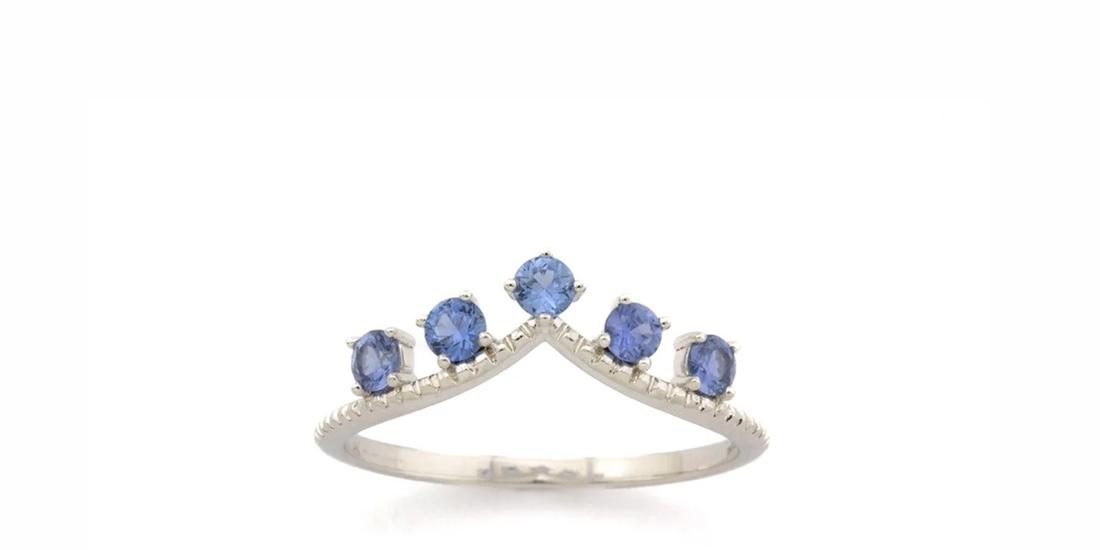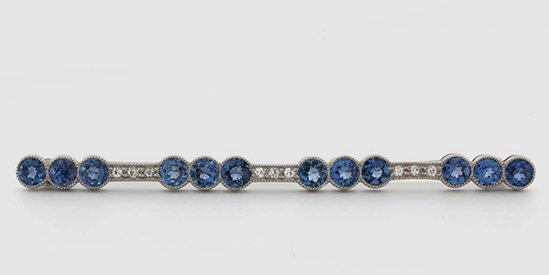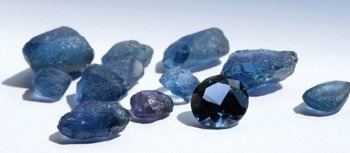Montana is known as the Treasure State because it is rich in many mineral and gemstone sources, including two types of sapphires: the Yogo Sapphire from the central area of the state, and Montana Sapphires found mostly in the Western half of the state.
Yogo Sapphire Jewelry
Engagement RingsRings
Necklaces
Earrings
Bracelets
Vintage Jewelry
Men's Jewelry
All Yogo Jewelry
SHOP GEMSTONES
Shop Loose YogosLearn About Yogos
HistoryGemology

Uniquely Montana
Find Yogo Engagement RingsMontana Sapphire Jewelry
Engagement RingsRings
Necklaces
Earrings
Bracelets
Vintage Jewelry
Men's Jewelry
All MT Sapphire Jewelry
SHOP GEMSTONES
Shop Loose MT SapphiresLearn About Montana Sapphires
HistoryGemology
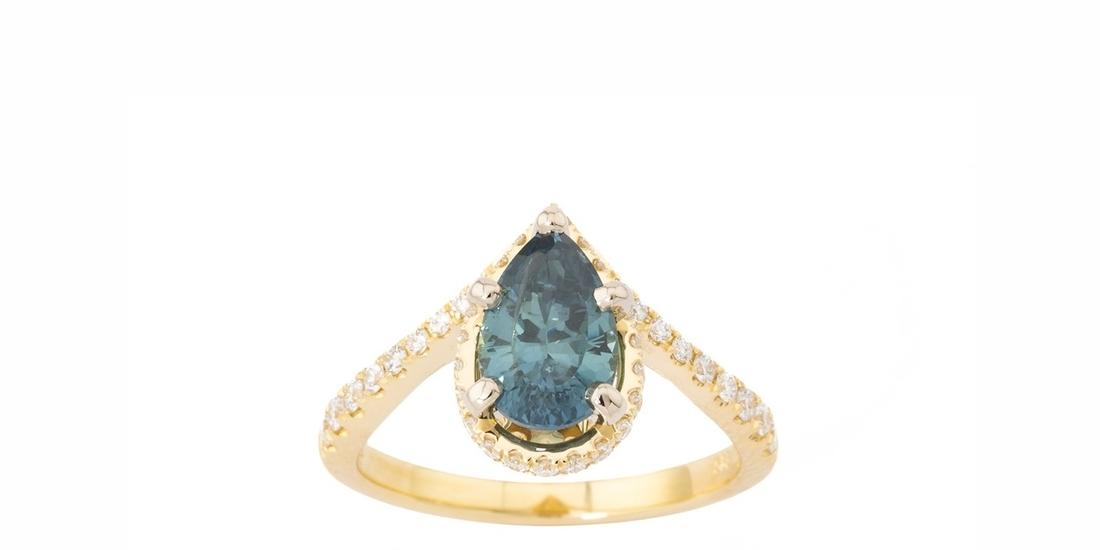
A True Treasure
Find Montana Sapphire Engagement Rings
History of Montana Sapphires
Montana Sapphires — History
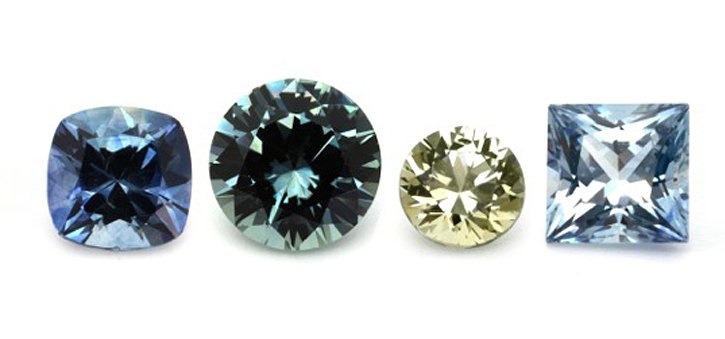
Colorful Montana Sapphires, heat-treated
Montana Sapphires were first discovered in 1865 by gold prospectors mining the Missouri River near Helena. These were the first gem-quality Sapphires found in the United States, though early miners initially saw them as a nuisance—pale in color and clogging sluice boxes used to separate gold from gravel. However, these overlooked gemstones would later contribute to Montana’s reputation as “The Treasure State.” It wasn’t until the introduction of heat treatment, a permanent process that enhances the color and clarity of Sapphires, that their true beauty was revealed. Many of these pale stones transformed into intensely vibrant blues, greens, yellows, and pinks. While the most common natural color is a soft blue-green, Montana Sapphires are renowned for their diverse hues. By the late 19th and early 20th centuries, Montana Sapphires were gaining international recognition, and mining operations expanded to meet demand.

These true red sapphires, at only .05 carats each, are technically rubies and are exceedingly rare.
Several Sapphire-bearing gravel bars can be found along the Missouri River, including Spokane Bar, Dana Bar, and El Dorado Bar. Among these, El Dorado Bar is particularly well known for its rich deposits of both Gold and Sapphires. During World War II, when many mining operations were shut down, El Dorado was one of the few allowed to continue operating due to its abundant supply of Sapphires, which were highly valued as industrial abrasives for the war effort.
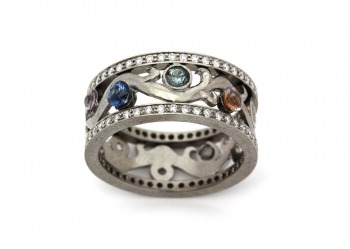
Custom piece created by the Gem Gallery
In the early 1900s, the Missouri River was dammed near El Dorado Bar, creating Hauser Lake and reshaping the landscape of the region. In more recent years, the area surrounding the lake was subdivided for residential development, and private property owners now hold the rights to any Sapphires found on their land. As a result, the area no longer operates as a fee-digging site, though two small commercial mining operations continue to extract both gold and Sapphires in the region. Across Hauser Lake, the Spokane Bar Mine remains an active fee-digging mine, offering the public the opportunity to search for Montana Sapphires. The Missouri River deposits are known for producing some of the largest Sapphires found in the state.
The gold rush sent prospectors up nearly every river and creek in Montana in search of fortune. While some struck gold, others found something just as valuable—Sapphires, and in remarkable abundance. One such location was Rock Creek, nestled in western Montana in what would later become known as the Sapphire Mountains. In 1892, miners searching for gold instead unearthed a vast deposit of Sapphires, remarkable not just for their quantity but for their stunning variety of colors, making it one of the most diverse Sapphire sources in the world. Many of the stones found in Rock Creek were small and naturally rounded, making them ideal for use in precision mechanics. For decades, these Sapphires were shipped by the ton to Switzerland, where they were cut into tiny, round watch bearings for the timepiece industry. Today, the Rock Creek deposit remains active and is best known as Gem Mountain, a popular site where visitors can mine their own Montana Sapphires.
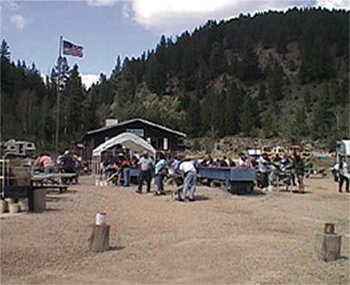
Gem Mountain sapphire mine
Since the discovery of Sapphires in Rock Creek in the late 1800s, commercial mining has taken place intermittently over the years. In more recent times, Gem Mountain has operated as a popular fee-digging site, allowing rockhounds and hobbyists the opportunity to search for Sapphires directly from the mountain. While on-site fee-digging is no longer available, visitors can still purchase Sapphire gravel from Gem Mountain and sift through it to uncover their own treasures. Gravel can be bought on-site by the bucket, with all necessary tools provided, or taken home for a more leisurely search.
Another notable Sapphire source in Montana is Dry Cottonwood Creek, where Sapphires were first discovered in 1889. Much like Rock Creek, this area has seen on-and-off commercial mining for well over a century. The Sapphires found in Dry Cottonwood Creek, located near Butte, share many characteristics with those from Gem Mountain, including their natural color variations and shapes. Unlike some other Montana Sapphire deposits, Dry Cottonwood Creek is not open to the public for digging. However, for those with a keen eye, Sapphires have been spotted in other creeks throughout the region, though they are far less abundant.
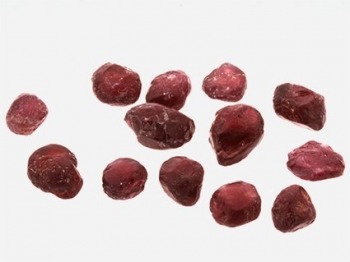
Montana rough garnets
In addition to Montana Sapphires, Garnets are another gemstone commonly found throughout the state. While Montana Garnets are abundant, they are often of commercial quality rather than gem quality, meaning they are primarily used for industrial applications rather than fine jewelry. One of the most well-known locations for Garnet mining is Alder Gulch, historically one of Montana’s richest gold strikes. Today, Alder Gulch continues to be mined commercially, with Garnets extracted for use in abrasives, water filtration, and other industrial purposes.
Another significant source of Garnets is the Ruby Reservoir and Ruby Valley, though the name is misleading. Early prospectors mistakenly identified the deep red Garnets found in the region as Rubies, leading to the name Ruby Valley. The sheer volume of Garnets in this area is remarkable—so much so that the "sand" surrounding Ruby Reservoir has a distinctive reddish hue due to the high concentration of Garnet particles. While not as famous as Montana's Sapphires, Garnets remain an important part of the state's rich mineral history.

